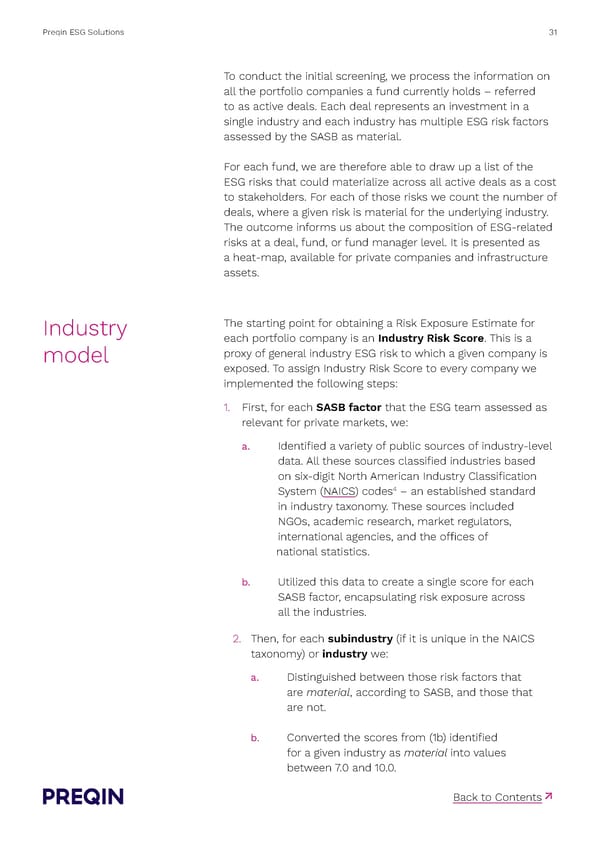Preqin ESG Solutions 31 To conduct the initial screening, we process the information on all the portfolio companies a fund currently holds – referred to as active deals. Each deal represents an investment in a single industry and each industry has multiple ESG risk factors assessed by the SASB as material. For each fund, we are therefore able to draw up a list of the ESG risks that could materialize across all active deals as a cost to stakeholders. For each of those risks we count the number of deals, where a given risk is material for the underlying industry. The outcome informs us about the composition of ESG-related risks at a deal, fund, or fund manager level. It is presented as a heat-map, available for private companies and infrastructure assets. Industry The starting point for obtaining a Risk Exposure Estimate for each portfolio company is an Industry Risk Score. This is a model proxy of general industry ESG risk to which a given company is exposed. To assign Industry Risk Score to every company we implemented the following steps: 1. First, for each SASB factor that the ESG team assessed as relevant for private markets, we: a. Identi昀椀ed a variety of public sources of industry-level data. All these sources classi昀椀ed industries based on six-digit North American Industry Classi昀椀cation 4 System (NAICS) codes – an established standard in industry taxonomy. These sources included NGOs, academic research, market regulators, international agencies, and the o昀케ces of national statistics. b. Utilized this data to create a single score for each SASB factor, encapsulating risk exposure across all the industries. 2. Then, for each subindustry (if it is unique in the NAICS taxonomy) or industry we: a. Distinguished between those risk factors that are material, according to SASB, and those that are not. b. Converted the scores from (1b) identi昀椀ed for a given industry as material into values between 7.0 and 10.0. ↗ Back to Contents
 Preqin ESG Solutions Methodology Page 30 Page 32
Preqin ESG Solutions Methodology Page 30 Page 32